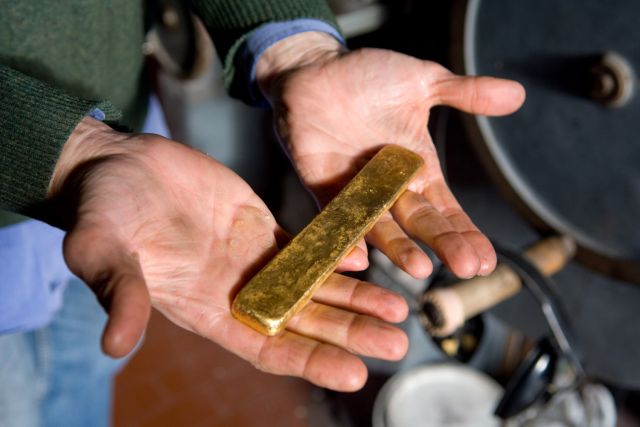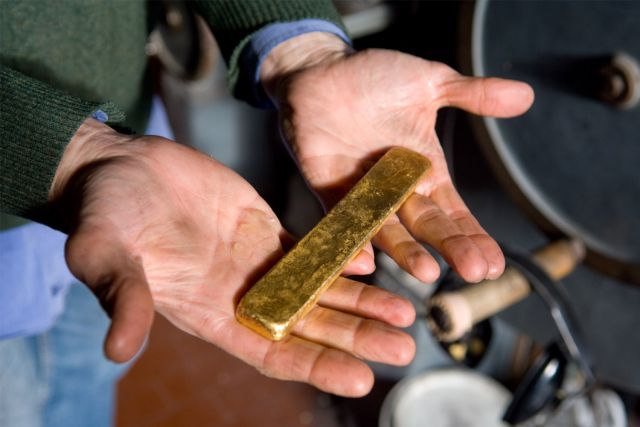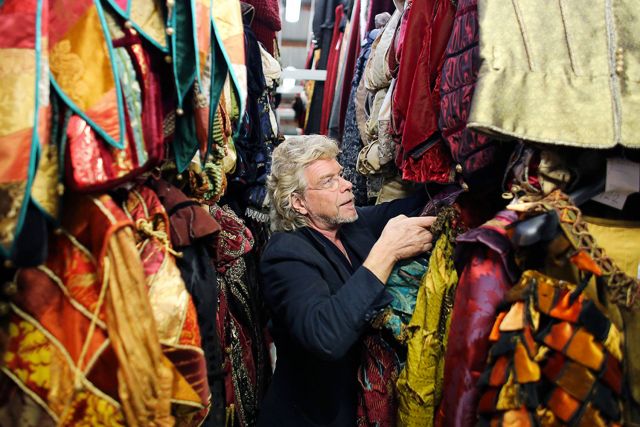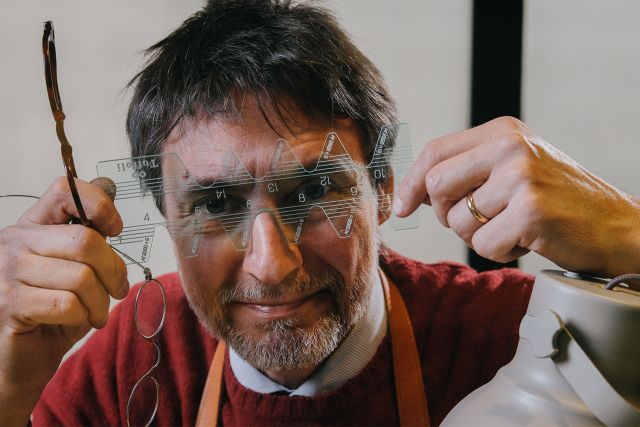Rectangular patterns of hand-beaten 24k gold leaf are laid on grey Bardiglio marble, creating the effect of rays of sunlight shining through a window onto table-top objects. This piece was commissioned for Doppia Firma 2018 and conceptualised by Dutch designer Kiki Van Eijk.
 IMG_5367.jpg.jpeg)

 © Michelangelo Foundation_1739895.jpg.jpeg)

Marino Menegazzo
- Berta Battiloro
- Gold leaf beater
- Venice, Italy
- Master Artisan
- Recommended by Fondazione Cologni Dei Mestieri D'Arte
Cannaregio 5182, 30121 Venice, Italy
Monday to Friday 08:30 - 13:00 / 14:00 - 16:30
+39 0415222802
A rare master of a demanding craft
- • Marino uses hammers weighing up to 8kg to beat gold into leaves
- • In 2018 he was awarded the Maestro d'Arte e Mestiere (MAM) prize
- • He took up this craft from his father-in-law in 1975
The craft of goldbeating reached Venice from Byzantium around the year 1000, when trade relations were thriving. In the capital of the Empire this craft was used to create mosaics, but in the Serenissima Republic it was implemented in a new and innovative way: ultra thin gold leaves were used to embellish the glass for which Venice became a world leader, as well as to magnify the prestige of banquets staged by the city’s rich inhabitants, who were willing to get into debt in order to serve dishes covered in gold. “However, it was not until the 18th century that the goldbeating craft reached its height,” explains Marino Menegazzo, master goldbeater. “In Venice there were 300 goldbeaters; together with glassmakers, they were the only artisans who could marry a woman of higher rank. But to prevent their guild from becoming too powerful, they could not own the gold they worked.”
Read the full interviewWorks
Photo: © Laila Pozzo

Photo: © Sara Menegazzo
This monumental installation was created by Heinz Mack for the 2014 Venice Biennale. It is made up of nine columns, each over 7 metres high, with a light-reflective gold surface composed of over 850,000 hand-beaten 24k gold-leaf tiles.

Photo: © Sara Menegazzo
This two-dimensional painting was created with different shades of hand-beaten gold.















